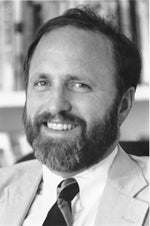Lawrence Medal ’03, master of arts ’78
Probing into the meaning of art
James Cuno, often recalls his time here at the University of Oregon, despite the fact that he also obtained a degree from Willamette University, and two from Harvard, including his Ph.D. in Fine Arts. “Not a month goes by that I don’t reflect on my time in Eugene,” he says. “The art history program at the University of Oregon introduced me to the study of art. Its rigor, and the quality and dedication of its teachers inspired me to pursue a career in the academy.” Cuno, a History of Art and Architecture professor at Harvard is also the Elizabeth and John Moors Cabot Director at the Harvard University Art Museums. He has held positions as museum director for the Hood Museum of Art at Dartmouth College, and the Grunwald Center for the Graphic Arts at UCLA.
 He has published many books, articles and exhibition catalogues in his area of expertise, which is French caricature. These include Politics and Polemics: French Caricature and the Revolution, 1789-1799, Retour de Russie: Gericault and Early French Lithography and the forthcoming From David to Daumier: Essays in the History and Meaning of French Caricature, 1780-1848. He frequently lectures on French caricature and other topics, such as the role of education and delight in art and art museums in contemporary American culture.
He has published many books, articles and exhibition catalogues in his area of expertise, which is French caricature. These include Politics and Polemics: French Caricature and the Revolution, 1789-1799, Retour de Russie: Gericault and Early French Lithography and the forthcoming From David to Daumier: Essays in the History and Meaning of French Caricature, 1780-1848. He frequently lectures on French caricature and other topics, such as the role of education and delight in art and art museums in contemporary American culture.
In 1998 he spoke at the opening of the Hallie Ford Museum of Art at Willamette University in Salem, Oregon. His lecture was entitled, “To Delight and Instruct: Art Museums at the Turn of the Millennium,” addressed one of the main problems he sees facing art museums today. As they become social institutions “with a mandate to encourage therapeutic social perspectives for learning about and appreciating the visual arts” they take on daunting new challenges. He pointed to one stemming from the 1992 American Association of Museums report which asks museums to “help nurture a humane citizenry” and equip them “to make informed choices in a democracy” while addressing “the challenges of an increasingly global society.” Cuno questioned why art museums should be charged with this objective and how they would achieve it.
It is apparent that Cuno delights in teaching. He taught art history courses at Dartmouth, UCLA and Vassar College before accepting his current appointment at Harvard. “I try to instill in my students a love of learning, and a deep respect for scholarship and critical inquiry,” he states. He sees this as a way he can give back some of what University of Oregon professors like Sherwin Simmons bestowed on him. “That’s what I remember most about Eugene,” he says, “the way my teachers encouraged me to probe deeper and deeper into the meanings of art and its history.”
Originally published in the A&AA Review, Spring 2000
